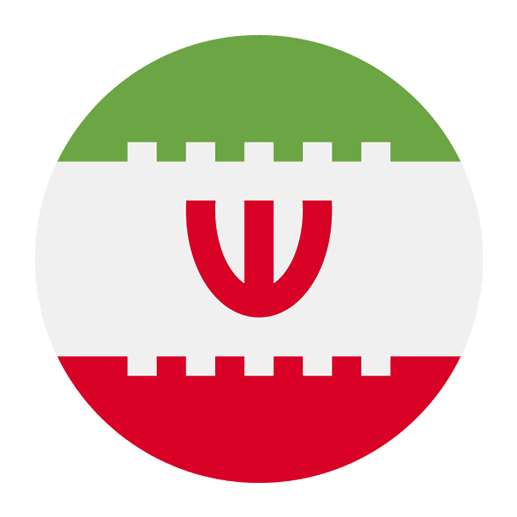Persian, also known as Farsi, is a language spoken by millions of people primarily in Iran, Afghanistan (where it’s known as Dari), and Tajikistan (where it’s called Tajik). With the growing number of Persian-speaking communities worldwide, healthcare professionals who can communicate effectively in Persian are increasingly in demand. This article aims to provide a comprehensive overview of specialized vocabulary and essential phrases for healthcare professionals who interact with Persian-speaking patients.
Understanding the Basics
Before diving into specialized vocabulary, it’s important to grasp the basics of the Persian language. Persian is an Indo-European language written in a modified version of the Arabic script. It has a Subject-Object-Verb (SOV) sentence structure, which can be a bit different from the Subject-Verb-Object (SVO) structure commonly used in English.
Common Phrases
Here are some common phrases that will be helpful in a healthcare setting:
1. **Hello**: سلام (Salam)
2. **Goodbye**: خداحافظ (Khoda Hafez)
3. **Please**: لطفاً (Lotfan)
4. **Thank you**: متشکرم (Motashakeram)
5. **Yes**: بله (Baleh)
6. **No**: نه (Na)
7. **Excuse me**: ببخشید (Bebakhshid)
8. **How are you?**: حال شما چطور است؟ (Hale shoma chetor ast?)
9. **I am a doctor/nurse**: من دکتر/پرستار هستم (Man doktor/parastar hastam)
Specialized Healthcare Vocabulary
In a medical setting, clear communication is crucial. Here is a list of specialized vocabulary that healthcare professionals should be familiar with when working with Persian-speaking patients:
Body Parts
1. **Head**: سر (Sar)
2. **Eye**: چشم (Cheshm)
3. **Ear**: گوش (Gush)
4. **Nose**: بینی (Bini)
5. **Mouth**: دهان (Dahan)
6. **Hand**: دست (Dast)
7. **Foot**: پا (Pa)
8. **Heart**: قلب (Ghalb)
9. **Lung**: ریه (Riyeh)
10. **Stomach**: معده (Me’deh)
Common Symptoms
1. **Pain**: درد (Dard)
2. **Fever**: تب (Tab)
3. **Cough**: سرفه (Sorfeh)
4. **Headache**: سردرد (Sardard)
5. **Nausea**: حالت تهوع (Haalat-e tahavo)
6. **Vomiting**: استفراغ (Esteferaagh)
7. **Dizziness**: سرگیجه (Sargijeh)
8. **Fatigue**: خستگی (Khastegi)
9. **Diarrhea**: اسهال (Es’hal)
10. **Constipation**: یبوست (Yoboost)
Medical Conditions
1. **Diabetes**: دیابت (Diabet)
2. **Hypertension**: فشار خون بالا (Feshar khoon bala)
3. **Asthma**: آسم (Asm)
4. **Allergy**: آلرژی (Allerji)
5. **Infection**: عفونت (Ofunat)
6. **Cancer**: سرطان (Saratan)
7. **Heart Disease**: بیماری قلبی (Bimari-ye ghalbi)
8. **Stroke**: سکته مغزی (Sekteh maghzi)
9. **Arthritis**: آرتریت (Artrit)
10. **Depression**: افسردگی (Afsordegi)
Medical Procedures
1. **Surgery**: جراحی (Jarahi)
2. **X-ray**: اشعه ایکس (Ash’eh-e X)
3. **Blood Test**: آزمایش خون (Azmaayesh khoon)
4. **Injection**: تزریق (Tazrigh)
5. **IV (Intravenous Therapy)**: تزریق وریدی (Tazrigh-e varidi)
6. **CT Scan**: سی تی اسکن (CT Eskan)
7. **MRI**: ام آر آی (MRI)
8. **Ultrasound**: سونوگرافی (Sonografi)
9. **Biopsy**: نمونهبرداری (Nemooneh bardari)
10. **Vaccination**: واکسیناسیون (Vaksinasyon)
Conducting a Patient Interview
Effective communication during patient interviews is crucial for accurate diagnosis and treatment. Here are some phrases and questions that can help:
Initial Questions
1. **What is your name?**: نام شما چیست؟ (Naam-e shoma chist?)
2. **How old are you?**: چند سال دارید؟ (Chand saal darid?)
3. **What brings you here today?**: امروز چه مشکلی دارید؟ (Emrooz che moshkeli darid?)
4. **How long have you been feeling this way?**: چه مدت است که اینطور احساس میکنید؟ (Che moddat ast ke intor ehsas mikonid?)
Medical History
1. **Do you have any chronic diseases?**: آیا بیماری مزمن دارید؟ (Aya bimari-ye mozmen darid?)
2. **Are you taking any medications?**: آیا دارویی مصرف میکنید؟ (Aya daru’i masraf mikonid?)
3. **Do you have any allergies?**: آیا حساسیت دارید؟ (Aya hasasiyat darid?)
4. **Have you had any surgeries?**: آیا جراحی داشتهاید؟ (Aya jarahi dashtid?)
Symptoms and Pain Assessment
1. **Where does it hurt?**: کجا درد میکند؟ (Koja dard mikonad?)
2. **On a scale of 1 to 10, how severe is your pain?**: در مقیاس ۱ تا ۱۰، درد شما چقدر شدید است؟ (Dar meqyas-e yek ta dah, dard-e shoma cheqadr shadid ast?)
3. **Is the pain constant or does it come and go?**: آیا درد مداوم است یا میآید و میرود؟ (Aya dard modavam ast ya mi-ayad va mi-ravad?)
4. **Have you experienced this symptom before?**: آیا قبلاً این علائم را داشتهاید؟ (Aya qabl’an in ala’em ra dashtid?)
Discussing Treatment
1. **We need to run some tests**: نیاز داریم چند آزمایش انجام دهیم (Niyaz darim chand azmaayesh anjam dahim)
2. **You need to take this medication**: شما باید این دارو را مصرف کنید (Shoma bayad in daru ra masraf konid)
3. **You need surgery**: شما نیاز به جراحی دارید (Shoma niyaz be jarahi darid)
4. **Follow these instructions**: این دستورالعملها را دنبال کنید (In dastoor-al-amal’ha ra donbal konid)
Cultural Sensitivity
Understanding and respecting cultural nuances can greatly improve the quality of care. Here are a few cultural considerations to keep in mind:
Gender Sensitivity
In many Persian-speaking cultures, gender roles are important, especially in healthcare settings. Female patients may prefer to be examined by female doctors and vice versa. Always ask for permission before conducting physical exams, and be sensitive to the patient’s comfort level.
Family Involvement
Family plays a significant role in decision-making within Persian-speaking communities. It’s common for multiple family members to be involved in discussions about the patient’s health. Be prepared to communicate with family members and include them in the conversation when appropriate.
Religious Considerations
Many Persian-speaking individuals are Muslims, and their religious beliefs may influence their healthcare decisions. Be respectful of their religious practices and consider how they might impact treatment plans. For example, dietary restrictions during Ramadan or preferences for same-gender healthcare providers can be important factors.
Resources for Further Learning
To become proficient in medical Persian, continuous learning and practice are essential. Here are some resources to help you improve your language skills:
Online Courses
1. **Rosetta Stone**: Offers comprehensive language courses, including Persian.
2. **Duolingo**: A popular app for learning languages with a user-friendly interface.
3. **Memrise**: Provides Persian courses with a focus on vocabulary and phrases.
Medical Persian Textbooks
1. **”Medical Persian: A Comprehensive Textbook”** by Dr. Mohammad Reza Shakibi: This book covers medical terminology, patient interactions, and cultural considerations.
2. **”Persian for Healthcare Professionals”** by Dr. Ali Azizi: A practical guide with common phrases, vocabulary, and cultural tips.
Language Exchange Programs
1. **Tandem**: An app that connects language learners with native speakers for language exchange.
2. **ConversationExchange.com**: A platform where you can find language partners for practice.
Practice with Native Speakers
1. **Local Communities**: If you live in an area with a Persian-speaking community, consider volunteering or working in local clinics to practice your language skills.
2. **Online Communities**: Join online forums or social media groups where you can interact with Persian speakers and practice medical terminology.
Conclusion
Mastering specialized vocabulary in Persian for healthcare professionals is a valuable skill that can significantly enhance patient care and communication. By understanding common phrases, medical terms, and cultural considerations, healthcare providers can build trust and provide better care to Persian-speaking patients. Continuous learning and practice, along with the use of available resources, will help you become proficient in medical Persian and improve your ability to serve this growing community effectively.
Whether you’re a doctor, nurse, or any other healthcare professional, this guide serves as a starting point to help you navigate the complexities of medical Persian. With dedication and practice, you’ll be well-equipped to provide compassionate and effective care to your Persian-speaking patients.

